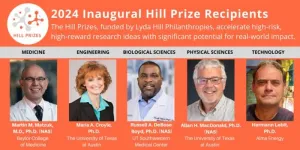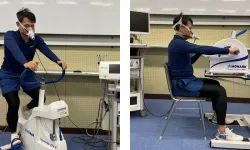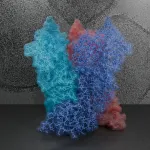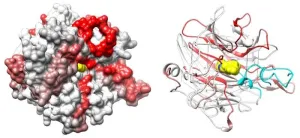(Press-News.org) Although most patients diagnosed with Covid-19 will quickly recover, some people experience symptoms that linger well after they start testing negative again — including insomnia. Scientists already knew that insomnia was common in patients who had to be hospitalized, but a team of scientists led by Dr Huong T. X. Hoang of Phenikaa University, Vietnam began to wonder if mild infections might also affect sleep quality.
“As a sleep researcher, I received many questions and complaints from relatives, friends, and colleagues about their sleep disturbances after recovering from Covid-19,” said Hoang, lead author of the article published in Frontiers in Public Health. “I found that the majority of papers focused on hospitalized patients. The environment of their treatment and quarantine would differ greatly from those with milder symptoms.”
Linking sickness and sleeplessness
Using Vietnam’s official network of Covid-19 survivors, the scientists recruited 1,056 people over the age of 18 who had been diagnosed with Covid-19 but not hospitalized in the last six months, and who reported no history of insomnia or psychiatric conditions. They sent out a survey to these people for completion between June and September 2022.
The survey asked about sociodemographic characteristics like age, sex, and chronic conditions, and the duration and severity of patients’ Covid-19 infection. It also measured symptoms of anxiety, stress, and depression experienced by patients. To investigate levels of insomnia, patients were asked to compare how well they slept, how long they slept, and how easy it was to fall asleep in the last two weeks, compared to before contracting Covid-19.
76% of patients report insomnia
76.1% of participants reported experiencing insomnia: 22.8% of these people reported severe insomnia. Half the participants said they woke more often in the night, while a third said that they found it harder to fall asleep, slept worse, and slept for less time. The severity of their initial infection didn’t seem to correlate with the severity of the insomnia they experienced. Although asymptomatic Covid-19 patients scored lower on the insomnia index, the difference was not statistically significant.
“If you experience insomnia after Covid-19, don’t think that is normal,” said Hoang. “If insomnia does not bother you much, you can take some simple actions, such as: taking a warm shower before bedtime, shutting your phone down at least one hour before going to bed, doing 30 minutes of exercise per day, and avoiding caffeine after 4pm. In case insomnia really troubles you, you can try some over-the-counter sleep aids. If they don’t help, go to see a sleep therapist.”
Two groups of people did have statistically significant higher rates of insomnia. These were people who had a pre-existing chronic condition, and people who scored highly for depressive or anxious symptoms. Both groups developed insomnia at a higher rate than their peers. When the scientists looked at those patients who reported insomnia, their depression and anxiety scores were higher than the average scores of the entire sample.
However, these illnesses are not completely independent of each other. Insomnia can worsen mental and physical health, as well as being driven by poorer mental and physical health.
Holistic approaches needed
The scientists pointed out that the rate of insomnia reported by patients is not only much higher than the rate among the general population, but higher than that reported for hospitalized Covid-19 patients. This could be partly because they focused on recently recovered patients who may have lingering symptoms. Recently recovered patients may also be more stressed and sensitive to changes in their physical health, leading them to perceive their sleep as worse.
The scientists emphasized that a holistic approach is needed to tackle all the factors contributing to insomnia, and that further investigation of the relationship between Covid-19, mental health problems, and insomnia is required.
“Since this is a cross-sectional study, the relationship of anxiety and depression with insomnia cannot be fully investigated,” cautioned Hoang. “In addition, collecting data online and a convenience sampling method can cause recall bias and selection bias. However, due to the situation in Vietnam at that time, collecting data via electronic invitation and convenience sampling was the most efficient and feasible strategy.”
END
Mild Covid-19 infections make insomnia more likely, especially in people with anxiety or depression
A survey of people who had been diagnosed with Covid-19 but never hospitalized found that 76% developed insomnia — and anxious or depressed people were more vulnerable
2024-02-05
ELSE PRESS RELEASES FROM THIS DATE:
Winners of the 2024 Hill Prizes announced
2024-02-05
Hill Prize in Medicine Awarded to Martin M. Matzuk, M.D., Ph.D. (NAS), Baylor College of Medicine
Hill Prize in Engineering Awarded to Maria A. Croyle, Ph.D., The University of Texas at Austin
Hill Prize in Biological Sciences Awarded to Russell A. DeBose-Boyd, Ph.D. (NAS), UT Southwestern Medical Center
Hill Prize in Physical Sciences Awarded to Allan H. MacDonald, Ph.D. (NAS), The University of Texas at Austin
Hill Prize in Technology Awarded to Hermann Lebit, Ph.D., Alma Energy
February 5, 2024 – Austin – TAMEST ...
Beyond the pedals: testing upper limb feasibility of cardiopulmonary exercise testing
2024-02-05
How can inclusivity be achieved in cardiopulmonary exercise tests for individuals facing lower limb injuries or disabilities that make it impossible to pedal a bicycle? Conventional exercise assessments rely primarily on lower limb exercise to determine maximal oxygen uptake – a cardiopulmonary function metric that indicates the maximum amount of oxygen that can be taken into the body in one minute. If lower limbs cannot be exercised, it necessitates an upper limb alternative. However, no clear upper limb ...
Making drug use less dangerous for users is the only way to tackle overdose epidemic
2024-02-05
With more than 100,000 drug overdose deaths in the United States in one year, communities need more than ‘just say no’ drug prevention education and abstinence-only addiction treatment to save lives, an expert has warned.
Statistics show that most people who complete conventional drug prevention education as youth eventually go on to use alcohol, nicotine, or illegal drugs.
Harm reduction expert Sheila P. Vakharia, PhD, MSW, explains: “The majority have experimented, others use socially, and some experience substance-related problems or addictions. And, regardless of their patterns of use, most have never been taught strategies for safer substance use, ...
Veterinary drug newly found in illicit opioid supply resistant to naloxone
2024-02-05
An article published in CMAJ (Canadian Medical Association Journal) describes five things clinicians and harm reduction workers should know about xylazine, a veterinary medication adulterating the illicit opioid supplyhttps://www.cmaj.ca/lookup/doi/10.1503/cmaj.231603.
There is no antidote to the effects of xylazine, and the authors explain that xylazine contamination should be suspected when naloxone appears not to work effectively in people with opioid toxicity.
Highlights:
Xylazine is not approved for use in humans and is increasingly found in illicit drug samples along with fentanyl. People using ...
Difficulty swallowing, allergies in children and young adults: is it eosinophilic esophagitis?
2024-02-05
Children and young adults with allergies or eczema who have difficulty swallowing may have eosinophilic esophagitis. A review published in CMAJ (Canadian Medical Association Journal) provides guidance on how to diagnose and manage this chronic inflammatory disease https://www.cmaj.ca/lookup/doi/10.1503/cmaj.230378.
In people with eosinophilic esophagitis, the esophageal lining is inflamed, which can cause injury and narrowing of the throat. Although it can affect anyone, the risk is higher in children aged 5–14 years ...
Down to the core of poxviruses
2024-02-05
A recent re-emergence and outbreak of Mpox brought poxviruses back as a public health threat, underlining an important knowledge gap at their core. Now, a team of researchers from the Institute of Science and Technology Austria (ISTA) lifted the mysteries of poxviral core architecture by combining various cryo-electron microscopy techniques with molecular modeling. The findings, published in Nature Structural & Molecular Biology, could facilitate future research on therapeutics targeting the poxvirus core.
Variola virus, the most notorious poxvirus and one of the deadliest viruses to have ...
New weight loss medication may help lower blood pressure in adults with obesity
2024-02-05
Research Highlights:
The weight loss medication tirzepatide significantly lowered the systolic blood pressure of nearly 500 adults who had obesity and took the medication for 36 weeks, or about eight months, in a subset of an international clinical trial.
Participants taking 5 mg of tirzepatide had an average systolic blood pressure reduction of 7.4 mm Hg; participants taking 10 mg had an average systolic blood pressure reduction of 10.6 mm Hg; and participants taking 15 mg had an average systolic blood pressure reduction of 8.0 mm Hg.
In this study, the blood-pressure lowering effects of tirzepatide were evident during both day and night ...
Study finds new treatment to reverse inflammation and arterial blockages in rheumatoid arthritis
2024-02-05
UNDER STRICT EMBARGO UNTIL 10AM (UK TIME) ON MONDAY 5 FEBRUARY 2024
Researchers from Queen Mary University of London have found that the molecule RvT4 enhances the body’s natural defences against atherosclerosis (hardening of the arteries) in patients with rheumatoid arthritis.
Studies in mice undertaken by researchers from Queen Mary University of London’s William Harvey Research Institute and Centre for Inflammation and Therapeutic Innovation, and funded by the European Research Council (ERC) and Barts Charity, shows that increasing levels of the RvT4 molecule in the body improves the ability of the body’s own defence ...
Improving climate predictions by unlocking the secrets of soil microbes
2024-02-05
Climate models are essential to predicting and addressing climate change, but can fail to adequately represent soil microbes, a critical player in ecosystem soil carbon sequestration that affects the global carbon cycle. A team of scientists led by the Department of Energy’s Lawrence Berkeley National Laboratory (Berkeley Lab) has developed a new model that incorporates genetic information from microbes. This new model enables the scientists to better understand how certain soil microbes efficiently store carbon supplied by plant ...
City of Hope preclinical study uncovers two proteins’ crucial role in causing cancer cell growth
2024-02-05
FINDINGS
Scientists at City of Hope®, one of the largest cancer research and treatment organizations in the United States, have discovered a new cellular mechanism that plays an important role in cancer cells’ ability to cause disease. The study was published in Nature Structural & Molecular Biology today.
A team led by Chun-Wei (David) Chen, Ph.D., an associate professor of systems biology at City of Hope, pinpointed two cell-surface proteins, integrin αV and β5, that partner to spur cancer cell growth. The researchers next identified a region of integrin αV called the β-propeller domain ...
LAST 30 PRESS RELEASES:
Sleeping in on weekends may help boost teens’ mental health
Study: Teens use cellphones for an hour a day at school
After more than two years of war, Palestinian children are hungry, denied education and “like the living dead”
The untold story of life with Prader-Willi syndrome - according to the siblings who live it
How the parasite that ‘gave up sex’ found more hosts – and why its victory won’t last
When is it time to jump? The boiling frog problem of AI use in physics education
Twitter data reveals partisan divide in understanding why pollen season's getting worse
AI is quick but risky for updating old software
Revolutionizing biosecurity: new multi-omics framework to transform invasive species management
From ancient herb to modern medicine: new review unveils the multi-targeted healing potential of Borago officinalis
Building a global scientific community: Biological Diversity Journal announces dual recruitment of Editorial Board and Youth Editorial Board members
Microbes that break down antibiotics help protect ecosystems under drug pollution
Smart biochar that remembers pollutants offers a new way to clean water and recycle biomass
Rice genes matter more than domestication in shaping plant microbiomes
Ticking time bomb: Some farmers report as many as 70 tick encounters over a 6-month period
Turning garden and crop waste into plastics
Scientists discover ‘platypus galaxies’ in the early universe
Seeing thyroid cancer in a new light: when AI meets label-free imaging in the operating room
Neutrophil-to-lymphocyte ratio may aid risk stratification in depressive disorder
2026 Seismological Society of America Annual Meeting
AI-powered ECG analysis offers promising path for early detection of chronic obstructive pulmonary disease, says Mount Sinai researchers
GIMM uncovers flaws in lab-grown heart cells and paves the way for improved treatments
Cracking the evolutionary code of sleep
Medications could help the aging brain cope with surgery, memory impairment
Back pain linked to worse sleep years later in men over 65, according to study
CDC urges ‘shared decision-making’ on some childhood vaccines; many unclear about what that means
New research finds that an ‘equal treatment’ approach to economic opportunity advertising can backfire
Researchers create shape-shifting, self-navigating microparticles
Science army mobilizes to map US soil microbiome
Researchers develop new tools to turn grain crops into biosensors
[Press-News.org] Mild Covid-19 infections make insomnia more likely, especially in people with anxiety or depressionA survey of people who had been diagnosed with Covid-19 but never hospitalized found that 76% developed insomnia — and anxious or depressed people were more vulnerable




